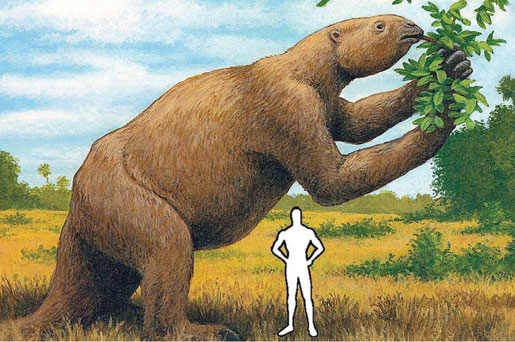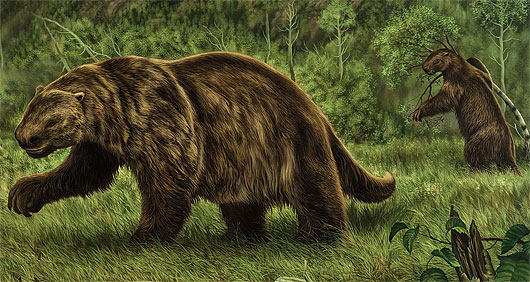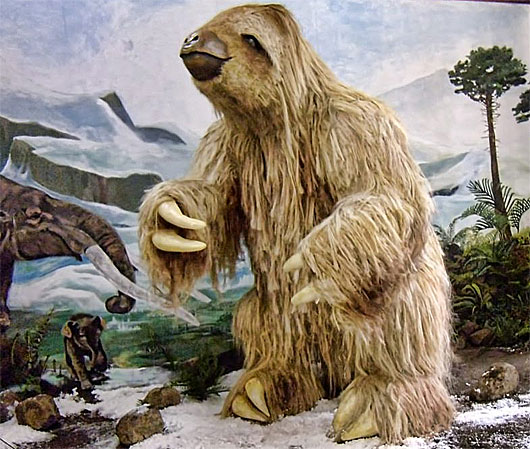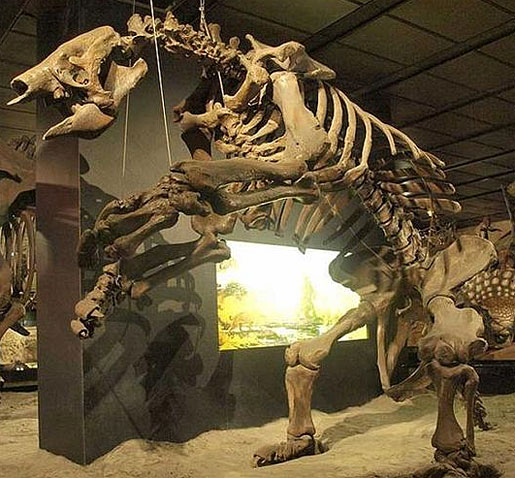Giant Sloths: Are They For Real?

If you have watched the animated movie franchise Ice Age, you’ll probably remember the talkative, friendly, carefree yet accident-prone Sid. He is a ground sloth and a close relative to the sloths existing today. But is Sid and his kind real?
Simply put, giant sloths or ground sloths are real, but they no longer exist today. Their closest extant relatives are the small, tree-dwelling sloths, which are found in the wild, zoos, and conservation facilities. Although it’s not an animal that is usually domesticated, a lot of people have become interested in buying a sloth and keeping it as a pet.
As their name implies, giant sloths were really big; standing 6 meters tall and weighing five tons. Existing sloths are around 3 feet tall (less than a meter) in height and have a maximum weight of 22 lbs (10 kilograms). Some ground sloths looked like grazing cows, while others were accomplished borrowers.
Although no one has ever seen the actual physical features of giant sloths, here are a few facts that support their existence.
Recent giant sloth fossil discovery in Los Angeles
According to a report published on the blog site The Source, a giant sloth’s hip joint, along with a bone fragment of a bison, were discovered underneath the city’s Crenshaw Boulevard. The conditions of the site are said to be an ideal area where these giant mammals thrived more than 10,000 years ago.
Workers who were in on-site for the expansion of the city’s subway system, found the fossilized bones. The hip joint reportedly belonged to Harlan’s sloth, which is a ground sloth species believed to have roamed South and North American regions. This species is said to have been ten feet in height and weighed around 1,500 pounds.

The presence of a mega tunnel dug by sloths in South America
In South America, researchers have unearthed several massive burrows that served as passageways to the forest. They believe the tunnels are already 8,000 to 10,000 years old, but how they were constructed still remains in question.
One of the most interesting findings are the giant claw marks on the surfaces of ceilings and walls. The markings led them to a hypothesis that a non-existing giant ground sloth species is behind the neatly constructed burrows.
The Legend of Mapinguary
Mapinguary (meaning the fetid beast or the roaring animal) is a famous myth monster of the South American jungle. The locals say that this legendary monster resembles a giant ground sloth with frightening physical features, that lived deep in the world’s largest forest – the Amazon.

According to a report in The New York Times, the legend of Mapinguary has become so popular that there were some scientists who went on an expedition to find the gigantic creature. But what does this have to do with the existence of giant sloths? Although the exploration had failed and probably even debunked the presence of Mapinguary, it actually brought to light historical human encounters with giant sloths.
Dr. David Oren, a former research director at Goeldi Institute in Belém, Brazil, said that the monster legend was based on “human contact with the last of the ground sloths.” He said the legend still exists after a hundred years and that the question of whether the Mapinguary is extant or not remains to be answered.
The possibility of bringing giant sloths back to life
It may sound absurd, but technology may make this possible. According to Mother Nature Network (MNN), the ground sloth is one of the 14 extinct animals that can come to life again. This is because these creatures became extinct not too long ago. The giant sloths may have been living 8,000 years ago when the human civilization was still in its early stages. Don’t be so skeptical, people behind this big life project have already extracted DNA samples from undamaged hair fossils.
How will the extinct sloth be conceived? Although tree sloths are the closest, existing relatives to ground sloths, it is impossible to use them as surrogate mothers because they’re way too small. However, there is the possibility of using an artificial womb to form and bring the giant mammal back to life.

